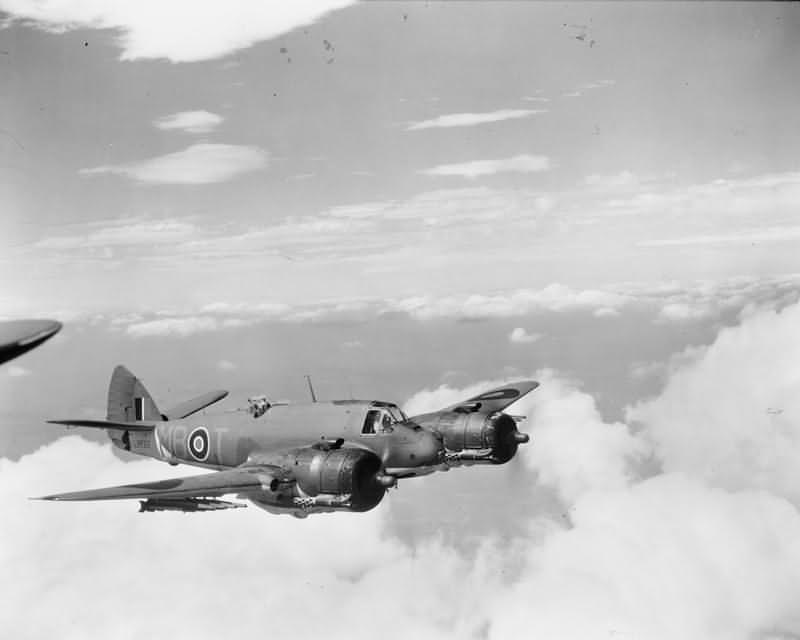The TF.Mk X variant of the Beaufighter differed from the Mk VI (ITF) solely in its engines, utilizing Hercules XVIIs instead. These engines were essentially modified Hercules VIs with shortened supercharger impellers that produced increased power at lower altitudes, generating 1,735 hp (1294 kW) at 500 ft (152 m). Like other Coastal Command aircraft, the Mk X was equipped with radar to facilitate target acquisition. Earlier versions utilized an ASV (air-to-surface vessel) set, but it was determined that the AI.Mk VIII radar, as employed in the Beaufighter Mk VIF fighter, was equally effective in an air-to-surface capacity. The AI.Mk VIII radar was installed in a “thimble” nose radome, replacing ASV on later Mk X models. Additionally, new armaments were introduced, including a 0.303-in (12.7-mm) Vickers “K” machine-gun in the observer’s dorsal cupola for rear defense. Many Coastal Command Mk VICs were retrofitted with this armament, while others were modified to carry a 250-lb (114-kg) bomb or four 90-lb (41-kg) rocket projectiles beneath each wing. With the added equipment, as well as a torpedo, the Mk X’s operational weight increased to approximately 50% above the Beaufighter’s initial estimated weight, resulting in compromised handling. To address this issue, the decision was made to equip the TF.Mk X with a dorsal fin similar to that of the Beaufighter Mk II fighter, which had been experimentally utilized to correct take-off swing. Late production aircraft were also outfitted with enlarged elevators, and the maximum take-off weight increased to approximately 25,400 lb (11522 kg).
Bristol Beaufighter TF Mk X LZ293 code MB-T of No 236 Squadron RAF
Published at 800 × 640 px.
Link to full-size photo:
Bristol Beaufighter TF Mk X LZ293 code MB-T of No 236 Squadron RAF
Site statistics:
Photos of World War II: over 26800
aircraft: 63 models
tanks: 59 models
vehicles: 59 models
guns: 3 models
units: 2
ships: 47
WW2 battlefields - 12
weapon models: -
equipment: -
